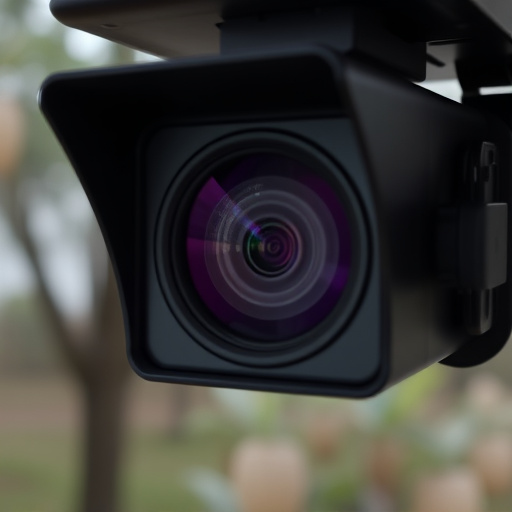Advanced spy camera detection leverages Spy Camera Artificial Intelligence (AI) integration to identify hidden surveillance devices with unprecedented accuracy. By analyzing light reflection patterns using machine learning and deep neural networks, AI systems can uncover irregular reflections indicative of spy cameras in high-risk areas like government buildings, corporate offices, and public spaces. This technology automates the process, reduces false positives, and enables real-time analysis, ensuring proactive protection against privacy invasions and evolving surveillance threats.
“Uncovering hidden spy cameras has become a critical concern in today’s digital age. This article explores innovative techniques, with a focus on light reflection, to detect these covert devices. We delve into the fundamentals of understanding how artificial intelligence (AI) integration enhances spy camera identification.
From basic principles to advanced AI applications, we navigate the challenges and limitations in real-world scenarios, offering insights into revolutionizing privacy protection through cutting-edge technology.”
(Keywords: Spy Camera, Artificial Intelligence Integration)
- Understanding Spy Camera Detection: The Basics of Light Reflection
- Integrating Artificial Intelligence for Advanced Spy Camera Detection
- Overcoming Challenges and Limitations in Real-World Applications
Understanding Spy Camera Detection: The Basics of Light Reflection
Understanding Spy Camera Detection: The Basics of Light Reflection
Spy camera detection, powered by advancements in artificial intelligence (AI), leverages light reflection techniques to uncover hidden surveillance devices. This innovative approach analyzes patterns in natural and artificial lighting to identify irregular reflections that might indicate the presence of a spy camera. AI algorithms are trained to recognize subtle differences in light behavior, such as unusual glints or shadows, which could be caused by the reflective surfaces commonly found in spy cameras.
By integrating this technology with AI, spy camera detection becomes more precise and efficient. The AI can process vast amounts of visual data swiftly, flagging potential issues where human observation might miss them. This is particularly useful in high-risk areas like government buildings, corporate offices, and public spaces where surveillance devices are often hidden to avoid detection. With its ability to learn and adapt, AI-integrated spy camera detection offers a proactive measure against unwanted privacy invasions.
Integrating Artificial Intelligence for Advanced Spy Camera Detection
The integration of Artificial Intelligence (AI) in spy camera detection has revolutionized the field, enabling more advanced and accurate identification techniques. By leveraging machine learning algorithms, AI systems can analyze light reflections and patterns to detect hidden cameras with remarkable precision. This cutting-edge approach involves training AI models using vast datasets of known camera signatures, allowing them to recognize subtle differences in light reflection that may be invisible to the human eye.
AI integration enhances the process by automating the detection process, reducing false positives, and enabling real-time analysis. With its ability to learn and adapt, AI can identify new types of spy cameras as they emerge, ensuring a dynamic defense against surveillance threats. This technology is particularly valuable in high-security environments where traditional methods may fall short.
Overcoming Challenges and Limitations in Real-World Applications
Overcoming Challenges and Limitations in Real-World Applications
In real-world scenarios, implementing spy camera detection through light reflection techniques is fraught with challenges. The sheer number of potential reflectors—from natural surfaces to man-made objects—can complicate the process, making it difficult for AI algorithms to differentiate between genuine reflectors and false positives. Additionally, environmental factors like lighting conditions, weather patterns, and varying angles of incidence can significantly impact signal quality and accuracy. To overcome these hurdles, researchers are integrating spy camera artificial intelligence (AI) into detection systems.
Advanced AI models, powered by machine learning and deep neural networks, are being developed to analyze light reflection patterns with greater precision. These AI-integrated solutions learn from vast datasets of known reflectors and non-reflectors, improving their ability to adapt to diverse real-world conditions. By leveraging the computational power of modern hardware, these systems can process complex data in near real-time, enhancing their effectiveness in detecting hidden spy cameras and ensuring the security of sensitive spaces.
The integration of artificial intelligence (AI) into spy camera detection techniques, such as leveraging light reflection, significantly enhances security measures. By employing advanced algorithms to analyze reflections and patterns, we can overcome challenges posed by hidden cameras in real-world settings. This technology ensures a more robust and effective approach to identifying and neutralizing surveillance devices, thereby fostering a safer environment. The future of spy camera detection lies in continuous AI refinement, enabling better adaptability and precision.
